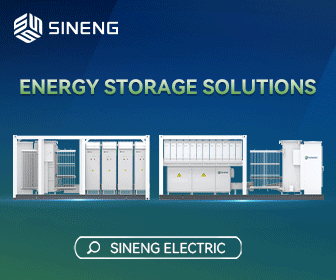Compressed Air Energy Storage Market Size Worth USD 31.10 Billion in 2031 | CAGR: 23.8%
According to Adroit Market Research, with a predicted CAGR of 23.8% from 2022 to 2031, the market for compressed air energy storag e was valued at USD 4.5 billion in 2021 and it is expected to increase to USD 31.10 billion by 2031.
The process of compressing air and storing it in below- or above-ground reservoirs or containers is known as compressed air energy storage, or CAES. It is a type of grid energy storage that aids in maintaining a stable balance between the supply and demand of electricity, especially in systems that use erratic renewable energy sources like wind and solar energy. Compressors are powered by extra electricity produced during times of low demand or strong renewable energy generation. The typical range of the high pressures to which these compressors can compress ambient air is 1,000 to 3,000 pounds per square inch (psi). This procedure converts electrical energy into poten tial energy, which is then stored in compressed air.
View More Information About Compressed Air Energy Storage Market @ https://www.adroitmarketresearch.com/contacts/request-sample/3208
The compressed air is kept in subterranean geological formations like salt caverns or natural gas reserves. The subsurface store serves as insulation and supports pressure maintenance. The compressed air is released from storage when there is a strong demand for power or when the production of re newable energy is low. The potential energy is held in the expanding air, which powers a generator to generate electricity. A "combined cycle" CAES system is what is created when the expelled air is blended with natural gas and fired to increase the efficiency of power generation.
Energy storage technologies like CAES are now required due to the expansion of renewable energy sources like wind and solar in order to store excess energy and guarantee a steady and dependable electricity supply. With the continued growth of renewable energy sources in the energy mix, a greater need for energy storage technologies is projected. In order to reduce greenhouse gas emissions and transition to more environmentally friendly energy sources, several countries and regions have set ambitious objectives. Government initiatives, rewards, and legislation supporting energy storage technologies may cause the CAES market to grow. Continuous research and development are enhancing the efficiency and economics of CAES systems. CAES may become more competitive and appealing to investors as a result of developments in materials, compressor technology, and energy conversion procedures.
Energy storage innovations like CAES are becoming more significant for grid resilience and stability. As a result, the likelihood of blackouts and unstable grids is reduced since they can react fast to fluctuations in supply and de mand. With many technologies fighting for market share, including thermal storage systems, flow batteries, and lithium-ion batteries, the energy storage industry is growing increasingly competitive. To keep expanding, CAES will need to maintain its level of cost and performance competition. A key element in its development is the availability of appropriate geological formations for underground CAES storage. More CAES initiatives could be implemented in areas with favorable geological characteristics. The expansion of the CAES market is significantly influenced by the availability of finance and financing options, including public grants and commercial investments.
Speak To Analyst @ https://www.adroitmarketresearch.com/contacts/speak-to-analyst/3208< span style='mso-bookmark:_Hlk134004523'>
The necessity for large-scale energy storage systems to facilitate the integration of renewable energy sources drove the growth of CAES technology in the twenty-first century. In order to explore different technological variants, a number of projects and pilot installations were suggested and created. CAES initiatives have been planned and developed over time in a number of nations, including the US, Canada, Germany, and China. These initiatives range in size and design, with some storing air in salt caves below ground while others look at above-ground storage possibilities. Through the development of adiabatic and isothermal CAES variations, recent research has focused on enhancing CAES effectiveness. While isothermal CAES aims to maintain a constant temperature throu ghout the operation, adiabatic CAES systems strive to minimize heat losses during compression and expansion.
With the swift switch from coal-based electricity generation to natural gas-based electricity generation, the US power industry is undergoing a significant upheaval. Renewables integration has also grown at a speedy rate due to falling prices and significant environmental advantages delivered. Energy storage system installation on a broad scale is seen to be essential in order to preserve the stability of the nation's aging power grid. The percentage of renewable energy in power generation is also anticipated to rise as the government works to decarbonize its economy and protect the environment.
Adroit Market Research | www.adroitmarketresearch.com










